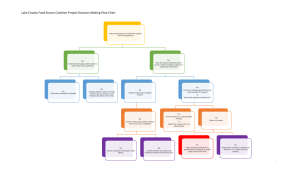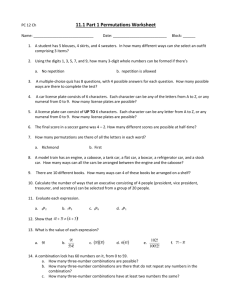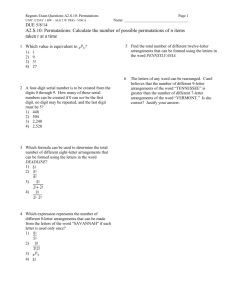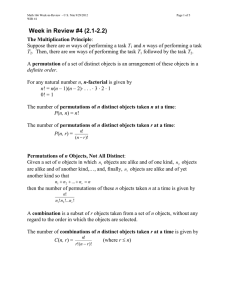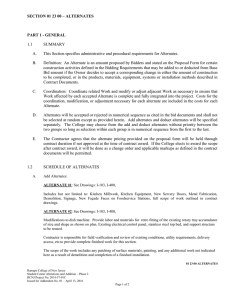Section 2.2-2.3 MATH 166:503 February 19, 2015
advertisement
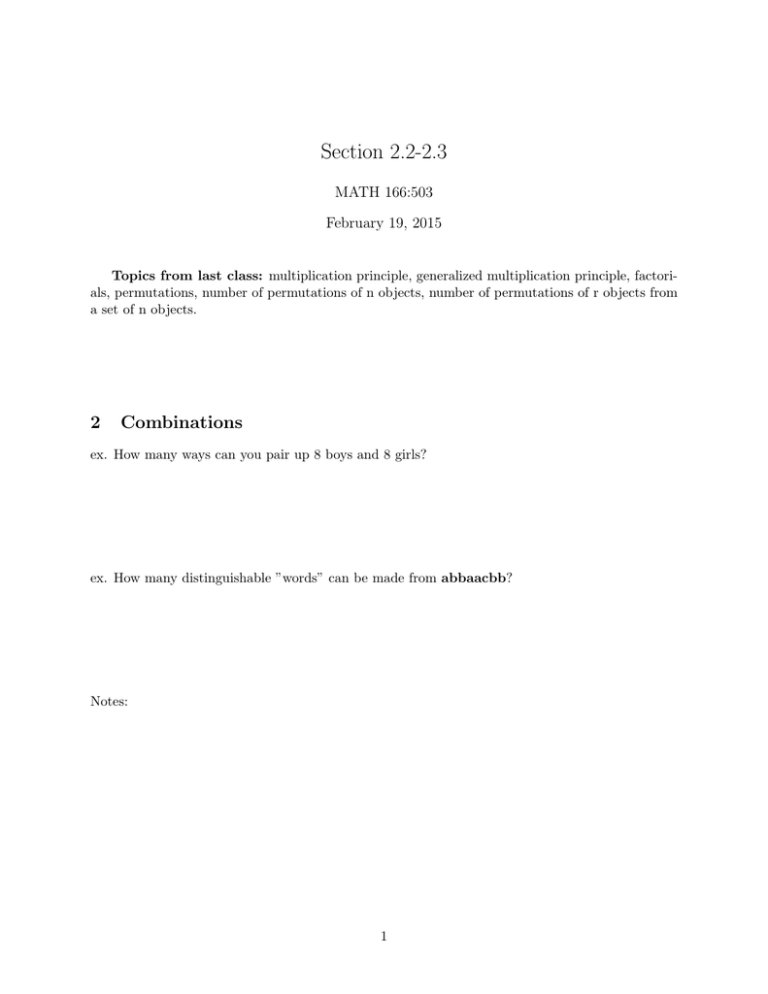
Section 2.2-2.3 MATH 166:503 February 19, 2015 Topics from last class: multiplication principle, generalized multiplication principle, factorials, permutations, number of permutations of n objects, number of permutations of r objects from a set of n objects. 2 Combinations ex. How many ways can you pair up 8 boys and 8 girls? ex. How many distinguishable ”words” can be made from abbaacbb? Notes: 1 ex. A, B, C, D, and E interviewed for a job. Of the five interviewed, three will be given a job. The order in which they are selected for the positions does not matter. If S is the sample space corresponding to this experiment, what is n(S)? ex. A committee of 15 consists of 8 men and 7 women. How many ways can we form a subcommittee of 5 people? If the subcommittee is all female? If the subcommittee has at least 2 women? Notes: 2 ex. 20 people are called for jury duty. 12 will be randomly selected for the duty with 3 alternates. We assume that the order of the alternates matters. How many ways can we select a jury with alternates? If the order of the alternates doesn’t matter? 3 Probability applications of counting principles ex. What is the probability that at least 2 people in this room share a birthday? ex. A fair coin is tossed 6 times. Find the probability of obtaining exactly 3 heads. Notes: 3 ex. A bowl contains 6 blueberries and 9 cranberries. If we select two without replacement, what is the probability that both are cranberries? What is the probability with replacement? ex. Assume Texas license plates are 3 letters followed by 4 digits. Your license plate starts with an M and ends with a digit that is a multiple of 4. What is the probability that a random Texas car will also have a license plate starting with an M and ending with a digit that is a multiple of 4? ex. 23 of 30 oranges collected from a tree are ripe. 10 are randomly selected to be given to neighbors. What is the probability that at least 8 of those we gave to neighbors are ripe? Notes: 4

